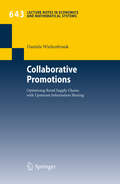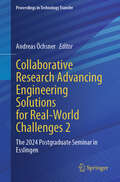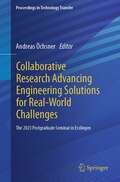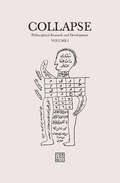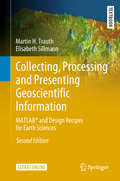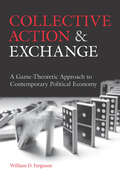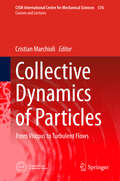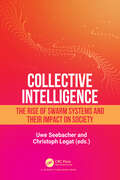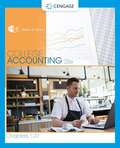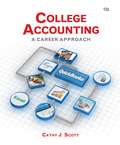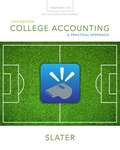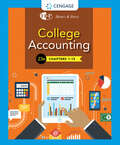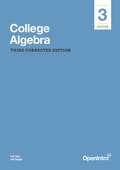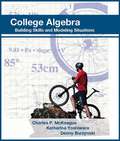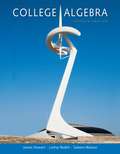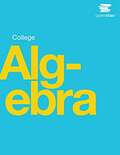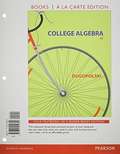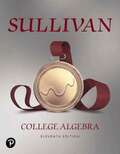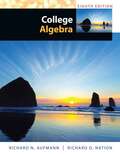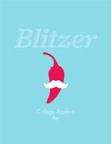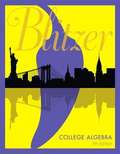- Table View
- List View
Collaborative Promotions: Optimizing Retail Supply Chains with Upstream Information Sharing (Lecture Notes in Economics and Mathematical Systems #643)
by Daniela WiehenbraukPromotions are at the same time beloved and feared by both food retailers and branded goods manufacturers in today's retail environment. Beloved because they attract smart customers and generate an immediate effect on a brand's sale. Feared because there is uncertainty about the competitors' behavior and the actual customer demand leading to high forecast errors. For the retailer, this results in a doom loop of over- or understocking with high inventory costs in the supply chain. Collaboration between retailers and the manufacturer disentangles the doom loop. The thesis reveals the appropriate kind and timing of information and develops a so called Competition Index. Inventory in the supply chain is eliminated and the customer is served better at a lower price. Based on a joint inventory and pricing model and an empirical analysis, it shows that the supply chain efficiency gains from collaborative promotions result in a win for customers, retailers and the manufacturer.
Collaborative Research Advancing Engineering Solutions for Real-World Challenges 2: The 2024 Postgraduate Seminar in Esslingen (Proceedings in Technology Transfer)
by Andreas ÖchsnerThis book presents the research outcomes from cooperative projects with industrial partners. It showcases the practical relevance of the research, which features the knowledge exchange. The papers cover a wide range of engineering disciplines, highlighting the impact of these collaborations in addressing real-world challenges and advancing technological developments.
Collaborative Research Advancing Engineering Solutions for Real-World Challenges: The 2023 Postgraduate Seminar in Esslingen (Proceedings in Technology Transfer)
by Andreas ÖchsnerThis book presents the research outcomes from cooperative projects with industrial partners. It showcases the practical relevance of the research, features the knowledge exchange. The papers cover a wide range of engineering disciplines, highlighting the impact of these collaborations in addressing real-world challenges and advancing technological developments.
Collaborative Statistics
by Barbara Illowsky Susan DeanCollaborative Statistics was written by Barbara Illowsky and Susan Dean, faculty members at De Anza College in Cupertino, California. The textbook was developed over several years and has been used in regular and honors-level classroom settings and in distance learning classes. This textbook is intended for introductory statistics courses being taken by students at two- and four-year colleges who are majoring in fields other than math or engineering. Intermediate algebra is the only prerequisite. The book focuses on applications of statistical knowledge rather than the theory behind it.
Collapse of Metastability: Dynamics of First-Order Phase Transition (Fundamental Theories of Physics #211)
by Seiji MiyashitaTo understand phenomena in nature, it is important to focus not only on properties of stationary states, but also their changes in time, that is, the dynamics between bistable states. This book reviews the mechanics of first-order phase transitions and discusses relaxation and collapses of metastable states from various viewpoints, including Kramers' method for the lifetime of metastability, Langer’s analysis on the singularity, effects of thermal fluctuation studied by Néel and Brown, and eigenvalue structures of the transfer-matrix for the phase transitions. The book also goes into the mechanics of metastability in quantum systems from the viewpoints of the eigenvalue problem of the Hamiltonian and the Liouvillian for a dynamical process and discusses relations between quantum tunneling processes and metastability therein. Lastly, the coercivity of magnets consisting of an ensemble of grains is reviewed. The book is beneficial for those new in the field as a primer on first-order phase transition from modern perspectives. The comprehensive content offers overviews of related topics and allows readers to quickly catch up with developments in the field.
Collapse: Philosophical Research and Development (Urbanomic #Vol. 1)
by Robin MackayAn investigation of the nature and philosophical uses of number. The first volume of Collapse investigates the nature and philosophical uses of number. The volume includes an interview with Alain Badiou on the relation between philosophy, mathematics, and science, an in-depth interview with mathematician Matthew Watkins on the strange connections between physics and the distribution of prime numbers, and contributions that demonstrate the many ways in which number intersects with philosophical thought—from the mathematics of intensity to terrorism, from occultism to information theory, and graphical works of multiplicity.
Collecting Compensation Data from Employers
by Panel On Measuring Collecting Pay Information from U.S. Employers by Gender Race National OriginU. S. agencies with responsibilities for enforcing equal employment opportunity laws have long relied on detailed information that is obtained from employers on employment in job groups by gender and race/ethnicity for identifying the possibility of discriminatory practices. The U. S. Equal Employment Opportunity Commission (EEOC), the Office of Federal Contract Compliance programs of the U. S. Department of Labor, and the Civil Rights Division of the U. S. Department of Justice have developed processes that use these employment data as well as other sources of information to target employers for further investigation and to perform statistical analysis that is used in enforcing the anti-discrimination laws. The limited data from employers do not include (with a few exceptions) the ongoing measurement of possible discrimination in compensation. The proposed Paycheck Fairness Act of 2009 would have required EEOC to issue regulations mandating that employers provide the EEOC with information on pay by the race, gender, and national origin of employees. The legislation was not enacted. If the legislation had become law, the EEOC would have been required to confront issues regarding currently available and potential data sources, methodological requirements, and appropriate statistical techniques for the measurement and collection of employer pay data. The panel concludes that the collection of earnings data would be a significant undertaking for the EEOC and that there might be an increased reporting burden on some employers. Currently, there is no clearly articulated vision of how the data on wages could be used in the conduct of the enforcement responsibilities of the relevant agencies. Collecting Compensation Data from Employers gives recommendations for targeting employers for investigation regarding their compliance with antidiscrimination laws.
Collecting, Processing and Presenting Geoscientific Information: How To Collect, Process And Present Geoscientific Information (Springer Textbooks in Earth Sciences, Geography and Environment)
by Martin H. Trauth Elisabeth SillmannThis second edition is an intensively revised and updated version of the book MATLAB® and Design Recipes for Earth Sciences. It aims to introduce students to the typical course followed by a data analysis project in earth sciences. A project usually involves searching relevant literature, reviewing and ranking published books and journal articles, extracting relevant information from the literature in the form of text, data, or graphs, searching and processing the relevant original data using MATLAB, and compiling and presenting the results as posters, abstracts, and oral presentations using graphics design software. The text of this book includes numerous examples on the use of internet resources, on the visualization of data with MATLAB, and on preparing scientific presentations. As with the book MATLAB Recipes for Earth Sciences–4rd Edition (2015), which demonstrates the use of statistical and numerical methods on earth science data, this book uses state-of-the art software packages, including MATLAB and the Adobe Creative Suite, to process and present geoscientific information collected during the course of an earth science project. The book's supplementary electronic material (available online through the publisher's website) includes color versions of all figures, recipes with all the MATLAB commands featured in the book, the example data, exported MATLAB graphics, and screenshots of the most important steps involved in processing the graphics.
Collective Action and Exchange: A Game-Theoretic Approach to Contemporary Political Economy
by William D. FergusonIn Collective Action and Exchange: A Game-Theoretic Approach to Contemporary Political Economy, William D. Ferguson presents a comprehensive political economy text aimed at advanced undergraduates in economics and graduate students in the social sciences. The text utilizes collective action as a unifying concept, arguing that collective-action problems lie at the foundation of market success, market failure, economic development, and the motivations for policy. Ferguson draws on information economics, social preference theory, cognition theory, institutional economics, as well as political and policy theory to develop this approach. The text uses classical, evolutionary, and epistemic game theory, along with basic social network analysis, as modeling frameworks. These models effectively bind the ideas presented, generating a coherent theoretic approach to political economy that stresses sometimes overlooked implications.
Collective Dynamics of Particles: From Viscous to Turbulent Flows (CISM International Centre for Mechanical Sciences #576)
by Cristian MarchioliThe book surveys the state-of-the-art methods that are currently available to model and simulate the presence of rigid particles in a fluid flow. For particles that are very small relative to the characteristic flow scales and move without interaction with other particles, effective equations of motion for particle tracking are formulated and applied (e.g. in gas-solid flows). For larger particles, for particles in liquid-solid flows and for particles that interact with each other or possibly modify the overall flow detailed model are presented. Special attention is given to the description of the approximate force coupling method (FCM) as a more general treatment for small particles, and derivations in the context of low Reynolds numbers for the particle motion as well as application at finite Reynolds numbers are provided. Other topics discussed in the book are the relation to higher resolution immersed boundary methods, possible extensions to non-spherical particles and examples of applications of such methods to dispersed multiphase flows.
Collective Intelligence: The Rise of Swarm Systems and their Impact on Society
by Uwe Seebacher Christoph LegatUnlock the future of technology with this captivating exploration of swarm intelligence. Dive into the future of autonomous systems, enhanced by cutting-edge multi-agent systems and predictive research. Real-world examples illustrate how these algorithms drive intelligent, coordinated behavior in industries like manufacturing and energy. Discover the innovative Industrial-Disruption-Index (IDI), pioneered by Uwe Seebacher, which predicts industry disruptions using swarm intelligence. Case studies from media to digital imaging offer invaluable insights into the future of industrial life cycles.Ideal for AI enthusiasts and professionals, this book provides inspiring, actionable insights for the future. It redefines artificial intelligence, showcasing how predictive intelligence can revolutionize group coordination for more efficient and sustainable systems. A crucial chapter highlights the shift from the Green Deal to the Emerald Deal, showing how swarm intelligence addresses societal challenges.
College Accounting 5th Edition
by Burton S. Kaliski Robert L. Dansby Michael D. LawrenceThis hands-on textbook teaches the "why" along with the "how" of key accounting concepts. The applied, theory-based approach enables students to master accounting procedures because they learn why they are important.
College Accounting, Chapters 1-27 (New in Accounting from Heintz and Parry)
by Robert Parry James HeintzThe leading Heintz/Parry's COLLEGE ACCOUNTING, 22E combines a step-by-step approach and excellent examples with an online homework tool that makes accounting understandable, regardless of your accounting background or business experience. Known for its clarity and accompanying technology, this book focuses on the skills needed to transition from the classroom to the workplace. The book begins with a basic foundation and simple service company examples before advancing to accounting within the more challenging merchandising and manufacturing environments. Engaging learning features reinforce the relevance of skills you're learning and ensure an understandable presentation. To optimize study and help you efficiently complete homework, CengageNOWv2 provides interactive support, Show Me How Videos, and an adaptive learning path that focuses on areas most challenging to you individually. Plan for success in tomorrow's workplace with COLLEGE ACCOUNTING, 22E.
College Accounting: A Career Approach (12th Edition)
by Cathy J. ScottThe twelfth edition of COLLEGE ACCOUNTING: A CAREER APPROACH maintains its dedicated emphasis on the significance of the College Accounting course as true groundwork for students' future classes and jobs, and a greater focus on teaching the fundamentals of accounting from a career development approach. This text builds student skills in the areas of accounting knowledge, technology, communication, ethics, and critical thinking, providing students the skills needed to be successful in life and work. With a focus on small business, COLLEGE ACCOUNTING: A CAREER APPROACH, Twelfth Edition, provides real-world context that keeps chapter content relevant and vital.
College Accounting: Chapters 1-12 with Study Guide and Working Papers (Thirteenth Edition)
by Jeffrey SlaterProvides a strong foundation in the basics of accounting. The material is organized in a clear, easy-to-follow format, and each chapter contains a plethora of learning tools and practice materials to help students immediately put their skills to use. The Thirteenth Edition stays current with modern accounting tools and techniques and includes updated computer workshops using Sage 50 and QuickBooks. Students are also introduced to new trends in banking technology and updated tax information.
College Accounting: Chapters 1-15
by James A. Heintz Robert W. ParryMaster the foundation principles of accounting as Heintz/Parry's leading COLLEGE ACCOUNTING, 23E combines a step-by-step approach, memorable examples and online homework resources to make accounting understandable, regardless of your accounting background or business experience. Known for clarity and supporting technology, this edition focuses on skills you can transfer from the classroom to workplace. You begin with a basic foundation and simple service company examples before advancing to accounting within more challenging merchandising and manufacturing environments. Engaging learning features emphasize the relevance of the skills you're learning and ensure an understandable presentation.
College Algebra
by Carl Stitz Jeff ZeagerCollege Algebra: Third Corrected Edition (Precalculus, by Stitz and Zeager)
College Algebra
by Denny Burzynski Katherine Yoshiwara Charles P. McKeagueCollege Algebra is the perfect book for students who need to satisfy the mathematics requirement for their degree, and for those students that will be taking an applied calculus course, or a statistics course. The book emphasizes both skill building and modeling, and includes study skills and success skills that will help them throughout their college careers. Students will leave the class having confidence in the skills they have developed, and a good idea of how the mathematics they have learned can be used to model a variety of situations in the world around them.
College Algebra
by James Stewart Lothar Redlin Saleem WatsonContains fully worked-out solutions to all of the odd-numbered exercises in the text, giving students a way to check their answers and ensure that they took the correct steps to arrive at an answer.
College Algebra
by OpenStax Jay AbramsonCollege Algebra provides a comprehensive exploration of algebraic principles and meets scope and sequence requirements for a typical introductory algebra course. The modular approach and richness of content ensure that the book meets the needs of a variety of courses. College Algebra offers a wealth of examples with detailed, conceptual explanations, building a strong foundation in the material before asking students to apply what they’ve learned.
College Algebra
by Mark DugopolskiWith an emphasis on problem solving and critical thinking, Mark Dugopolski's College Algebra, Sixth Edition gives students the essential strategies to help them develop the comprehension and confidence they need to be successful in this course. Students will find carefully placed learning aids and review tools to help them do the math.
College Algebra
by Michael SullivanPrepare. Practice. Review. Michael Sullivan’s time-tested approach focuses students on the fundamental skills they need for the course: preparing for class, practicing with homework, and reviewing the concepts. The 11th Edition continues to evolve to meet the needs of today’s students. This series prepares and supports students with access to help, where and when they require it. The hallmark Sullivan cycle of continuous preparation and retention — along with the high-quality exercises that Sullivan texts are known for — gives students the reinforcement they need. Also available with MyLab Math By combining trusted author content with digital tools and a flexible platform, MyLab Math personalizes the learning experience and improves results for each student. Note: You are purchasing a standalone product; MyLab Math does not come packaged with this content. Students, if interested in purchasing this title with MyLab Math, ask your instructor to confirm the correct package ISBN and Course ID. Instructors, contact your Pearson representative for more information.
College Algebra
by Richard N. Aufmann Richard D. NationAccessible to students and flexible for instructors, COLLEGE ALGEBRA, EIGHTH EDITION, incorporates the dynamic link between concepts and applications to bring mathematics to life. By integrating interactive learning techniques, the Aufmann author team helps students to better understand concepts, work independently, and obtain greater mathematical fluency. The Eighth Edition also includes technology features to accommodate courses that allow the option of using graphing calculators. Additional program components that support student success include tutorial practice, online homework, Live Online Tutoring, and Instructional DVDs. The authors' proven Aufmann Interactive Method allows students to try a skill as it is presented in example form. This interaction between the examples and Try Exercises serves as a checkpoint to students as they read the textbook, do their homework, or study a section. In the Eighth Edition, Review Notes are featured more prominently throughout the text to help students recognize the key prerequisite skills needed to understand new concepts.
College Algebra
by Robert F. BlitzerBob Blitzer continues to inspire students with his engaging approach to mathematics, making this beloved series the #1 in the market year after year. Blitzer draws on his unique background in mathematics and behavioral science to present a wide range of vivid applications in real-life situations. Students of all majors stay engaged because Blitzer uses pop-culture and up-to-date references to connect math to students’ lives, showing that our world is profoundly mathematical. <p><p> With the new edition, Blitzer takes student engagement with the mathematical world to a whole new level drawing from applications across all fields as well as topics that are of interest to any college student (e.g., student loan debt, grade inflation, sleep hours of college students). Applications are also brought to life online in a new, assignable video series that explore the entertaining and mathematical Blitzer Bonus boxes. The new edition also aims to help more students to succeed in the course with just-in-time support in the text--such as Brief Review of prerequisite topics, Achieving Success boxes, and Retain the Concepts exercises--as well as support within MyLab™ Math such as new concept-level videos, assignable tools to enhance visualization, and more.
